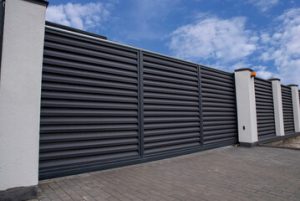The world is constantly reshaping itself, and so are the methods we use to build and unbuild. Every structure that rises must one day make way for something new, and every pile of waste must be managed with purpose. Rubbish removal and demolition have evolved from brute-force tasks into highly strategic operations. They now stand at the intersection of innovation, sustainability, and urban transformation.

In the past, demolition meant chaos and debris scattered without thought. Workers would swing heavy tools and reduce structures to rubble without considering what happened next. Today, the approach is more deliberate and controlled, guided by precision planning and safety protocols. It’s no longer about just knocking things down but dismantling them in a way that aligns with broader environmental and social goals.
The shift began with the growing recognition of how much waste demolition generates. Old concrete, steel, wood, and insulation used to end up buried without a second thought. But mounting pressure to reduce landfill use forced industries to rethink their methods. Rubbish removal now includes sorting, recycling, and even repurposing materials before they ever leave a site.
This new approach doesn’t just benefit the environment; it also reduces costs and conserves resources. Materials once considered useless are now valuable commodities. Steel beams can be melted down and reused, bricks can be cleaned and sold, and even old glass can be repurposed into new products. What was once waste is now part of a circular economy that keeps materials in use longer.
Demolition techniques have also advanced far beyond simple explosives or wrecking balls. Controlled deconstruction is becoming the preferred choice in many projects. This involves taking a structure apart piece by piece, allowing for better material recovery and improved safety. It requires more planning and skill, but the results are cleaner sites and more reusable materials.
Technology has played a huge role in this transformation. Robotics and remote-controlled machinery now handle some of the most dangerous tasks. Drones provide aerial data that helps plan the safest and most efficient demolition strategy. Sensors and smart tools track dust levels and noise, ensuring the process meets strict environmental standards. All of these tools make demolition safer, cleaner, and more predictable.
One of the most exciting trends is the rise of selective demolition. Rather than tearing down an entire building, crews focus only on the parts that need to go. This approach is ideal for renovations, expansions, and adaptive reuse projects. It reduces waste, saves money, and preserves structural elements that still have value. It also minimizes disruption to surrounding buildings and communities.
Rubbish removal has undergone a similar evolution, becoming more than just hauling trash away. Waste management firms now operate with sophisticated sorting systems that can separate recyclable and hazardous materials on-site. They analyze the composition of waste streams and plan removal schedules to reduce emissions from transport. The goal is not just to clear a site but to do so with the least environmental impact possible.
Environmental regulations are another factor reshaping both industries. Strict standards now govern how demolition waste is handled, how much dust can be released, and how hazardous materials are disposed of. Compliance isn’t optional; it’s a core part of project planning. This regulatory pressure has pushed companies to innovate and adopt cleaner, more efficient practices.
The concept of urban mining is another forward-thinking idea gaining traction. It treats demolition sites as sources of valuable raw materials, similar to natural resource deposits. Copper wiring, aluminum frames, and rare metals in old electronics are all recovered rather than discarded. This not only reduces waste but also decreases the demand for new resource extraction.
There’s also a growing focus on the social aspects of demolition and rubbish removal. Communities want assurances that projects will be safe, quiet, and environmentally responsible. Companies are responding with better communication, transparent practices, and efforts to minimize disruption. This builds trust and strengthens the relationship between construction firms and the people they serve.
Sustainability is not just a buzzword here; it’s a fundamental driver of modern practices. Many demolition projects now aim for near-zero waste outcomes. That means every step, from dismantling structures to removing debris, is designed with reuse and recycling in mind. It’s part of a larger movement to make the construction and deconstruction cycle as eco-friendly as possible.
There’s also an increasing emphasis on worker safety and training. As demolition becomes more technical, workers need advanced skills and certifications. They must understand how to operate complex machinery, handle hazardous materials, and follow safety protocols. This investment in human capital leads to fewer accidents, better project outcomes, and a more professional industry overall.
On the rubbish removal side, data-driven decision-making is changing the game. Waste tracking software monitors how much material is collected, where it goes, and how it’s processed. This information helps companies improve efficiency and demonstrate their sustainability credentials to clients and regulators. It’s part of a broader digital transformation happening across the construction and waste industries.
One emerging concept is integrating demolition with redevelopment from the very beginning. Instead of treating them as separate stages, planners now see them as part of a single lifecycle. This approach allows for more efficient use of materials, better coordination of logistics, and smoother transitions from old structures to new ones. It also reduces downtime and costs for developers.
Rubbish removal services are also adapting to changing lifestyles and construction trends. Smaller-scale demolition and renovation projects in residential areas require more flexible and responsive waste management solutions. Portable sorting units, on-demand pickup services, and compact recycling facilities are becoming standard offerings. These innovations make it easier for homeowners and small contractors to handle waste responsibly.
The conversation around demolition is even influencing how new buildings are designed. Architects and engineers are now considering how structures can be easily dismantled at the end of their life cycle. This concept, known as design for deconstruction, allows materials to be recovered with minimal damage. It’s a proactive step that connects construction with future rubbish removal needs.
Looking ahead, the future of these industries will likely involve even more automation and sustainability. Self-driving demolition equipment, AI-driven project planning, and fully circular material flows are already being tested. As urban areas grow denser and environmental pressures intensify, these innovations will become essential. They’ll enable faster, safer, and more responsible transformations of our built environment.
The cultural perception of demolition is also changing. It’s no longer seen as purely destructive but as a crucial step in renewal and regeneration. Clearing away the old is what makes space for the new—new homes, new infrastructure, new opportunities. Rubbish removal plays a similar role by turning waste into resources that fuel future growth.
In the end, rubbish removal and demolition are about more than clearing space. They’re about shaping the future while respecting the past. They’re about balancing efficiency with sustainability, safety with progress, and destruction with creation. As the world builds higher and digs deeper, these industries will remain at the heart of transformation, ensuring that every ending paves the way for a better beginning.
The evolution of these practices shows just how far we’ve come from the days of dust and debris without direction. Today, each demolished wall and cleared site is part of a broader story about innovation, responsibility, and resilience. And as cities continue to rise and old structures fade, rubbish removal and demolition will remain essential partners in crafting a more sustainable and thoughtful world.




